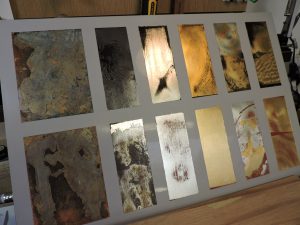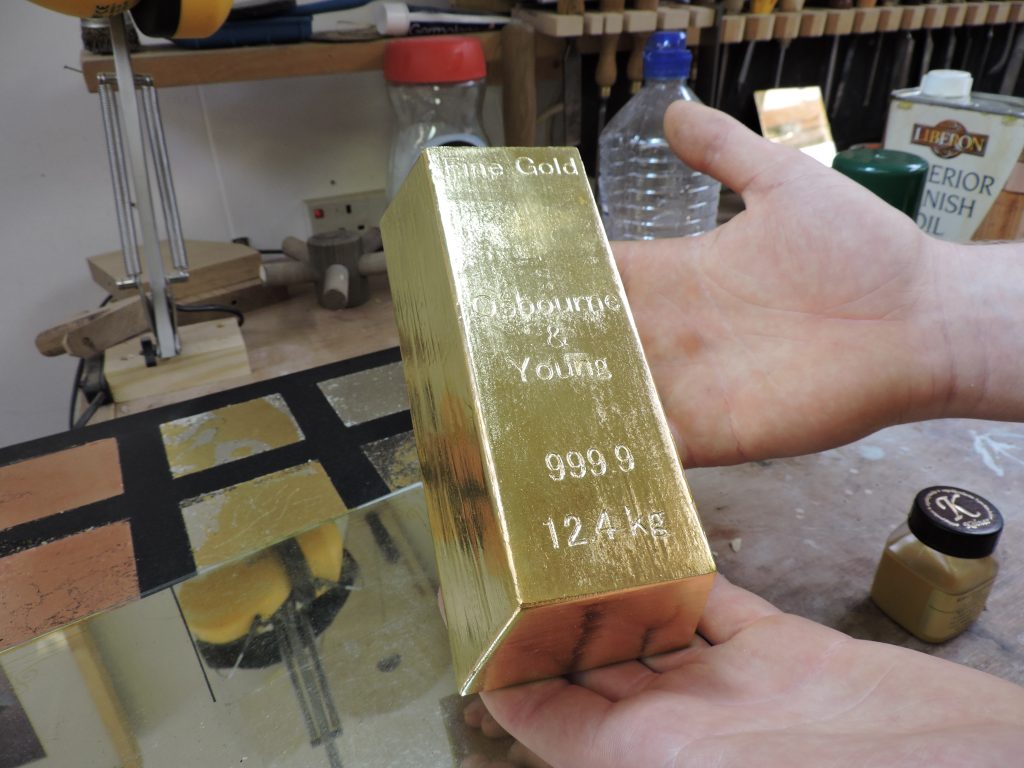Gilding is a technique that was invented by the ancient Egyptians 5,000 years ago and reached a zenith in the European Renaissance.
In the early millennia, the technique was used to gild gold onto sarcophagi and statues, and then illuminated religious texts. In the Middle Ages it was used on sacred paintings, particularly to illuminate features such as a saint’s halo.
At the end of the Middle Ages and into the Renaissance gilding began to move into other applications, such as mirrors or picture frames. The most famous artist who used gilding is perhaps Gustav Klimt.
But just as gilding has moved from the religious to the everyday, so too have the range of materials that can be used for gilding, such as copper and silver.
Richard Walker is the gilding expert that the school brings in each year to teach this most ancient skill, and he’s just completed a two-week masterclass to pass on his expertise using a range of samples in both solid and distressed finishes.
Richard runs Watergild Studios, his own gilding business, and teaches in the UK and USA. He is regarded as one of Europe’s foremost gilding experts and taught our students the finer points of oil-gilding, water-gilding and verre eglomisé, the art of gilding onto glass.
Apart from the more usual materials such as gold and silver, he also tutored on how to use chemicals such as copper nitrate acid and sodium hypochlorite to produce different effects and colours on a range of different metals. This created finishes such as verdigris on copper, metallic marbling and providing a patina on silver.
While some of our students are using their new skills to gild particular pieces of furniture, including Archana Pai who is gilding an intricate mirror, others have used the opportunity to experiment with different materials and processes to create whole new palettes of colour and texture.

Stewart Reid is one such student, and his tester board shown here has areas of gold, white gold, silver, alcohol on silver, copper, and a variety of distressing techniques and chemical reactions.
Another innovation that Richard introduced this year is the Kolner system, a nanotechnology process that has a unique bonding property which gives a greatly-enhanced lustre.
It’s a technique that Isaac Young has adopted to create the gold ingot (main picture), which he’ll use to advertise his business Osbourne & Young, that he’ll be setting up in Suffolk after graduation.
It’s also the technique that Honor Dalrymple is using to decorate the carved frame of a mirror she’s working on.
“It’s always a pleasure to come to the Chippendale school and to see how students apply different gilding techniques to different objects,” said Richard, who describes the Chippendale school as the best in the world.
“This year has been particularly fascinating, as the students have not only developed contemporary ways of employing gilding techniques, but combined processes in ways that I’ve never even considered!” he said.
